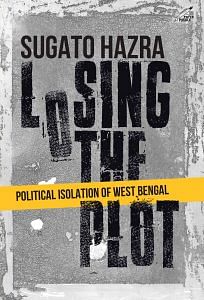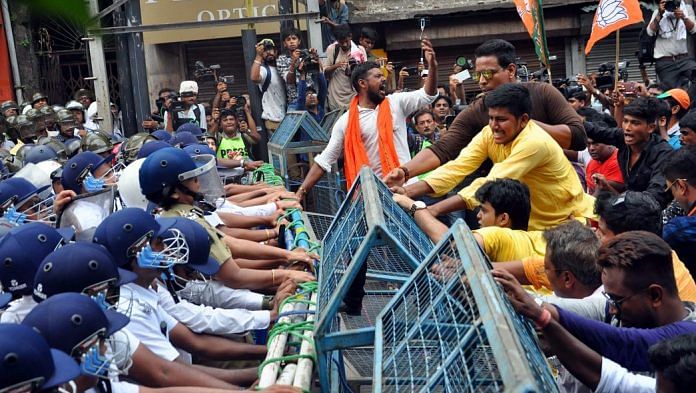The Nehru government’s decision to transfer a part of Jalpaiguri district – a four square km land – Berubari – to Pakistan was another instance of rift between West Bengal and the national government. Prime Minister Nehru arrived at an agreement with the Pakistan Prime Minister Feroze Khan Noon in 1958 which provided among other things for ‘Exchange of enclaves on the basis of enclaves for enclaves without any consideration of territorial loss or gain’ (9th Amendment of Constitution act, 1960, Article I and Part I of First Schedule). As a result of this agreement Dahagram and Angorpota came to Indian territory and resulted in transfer of 11.29 sq. kms of southern half of Berubari to Pakistan. There was vehement opposition in West Bengal. Nehru had justified his decision on the basis of ‘recommendation of revenue officers of West Bengal’. But this was not true.
Bidhan Roy had to issue a clarification in the West Bengal assembly that revenue officers had no role in giving such recommendations nor were they empowered to do so. A unanimous resolution of the West Bengal assembly was sent to Prime Minister Nehru against the handing over of the state territory to Pakistan. When the two houses of the Lok Sabha and the Rajya Sabha passed the amendment bill all elected members of the Congress including Asok Sen, the law minister, stayed away. In any case international treaties, according to the Constitution, rest with the central government with states having no authority. Thus despite its opposition West Bengal could not influence the two agreements signed by Nehru – one with Liaquat Ali Khan in 1950 and the other (though of not similar significance) with Feroze Khan Noon in 1958. This difference between the Centre and the state raised its head in subsequent years also – river-water sharing for example.
On 31st August the opposition called for a rally which was attended mostly by people coming from the villages. After the rally a procession moved towards the Writers’ Building, the administrative headquarter of the government. Top leaders were either arrested or went underground to avoid getting arrested. Like the earlier movements – anti-tram fare increase and salary increase for teachers – this too turned violent with matching police brutality. The food movement played a significant role in shaping up the politics of West Bengal. The administration was much more harsh on the protesters than the earlier two occasions. The most interesting overview of the food movement was provided in the Economic Weekly issue dated September 12, 1959.
Even Jyoti Basu in his reminiscences had accepted that when the movement was launched the situation was improving and the administration had initiated release of prisoners. The movement was primarily political and had served, at least the politicians felt, interests of all political elements. For the opposition was divided – they were on different sides of the fence in Kerala where the coalition government led by the CPI was dismissed by the Centre. But not the entire opposition group in West Bengal was part of the dismissed
CPI-led coalition. Evidently for the CPI it was politically imperative to show that Kerala was not the only issue they were up against – the food movement therefore came as an opportunity. For the other opposition parties the food movement was a plank they had refused to hand over to the CPI, as has been mentioned earlier when in the Calcutta rally over food scarcity the CPI representative did not receive an opportunity to make an address.
The movement was characterised by lack of organisation as well as any plan of action on the part of the opposition leadership. Most of the leaders were either in hiding or behind bars while people enticed by their shrill oratory ended up as victims of brutal lathi charge by the police. Many villagers who came to join the rally had to bear the brunt while the ruffians managed to hurl brickbats, soda bottles and bombs at the police who retaliated with lathi, tear gas and firing at mobs. Setting fire to trams, buses and ambulances was a patented activity of any movement in Calcutta by then. ‘Citizens of Calcutta have learnt to take such things in their stride and give them no more than a passing thought. Such things have happened before and will happen again,’ opined the Economic Weekly. Even the prime minister called Calcutta the nightmare city, perhaps with sufficient justification.
Despite the sweeping election victory, the 1969 poll was still in a work-in-progress stage for West Bengal’s isolation from the national mainstream politics that one witnessed later. One reason was the elements within the United Front – like the Bangla Congress – which were ideologically more aligned with the Congress than with communism. The poll saw complete wiping out of right-wing elements like Bharatiya Jana Sangh or communal political parties like Hindu Mahasabha; even the Progressive Muslim League could not make much headway since people voted more on political ideological line than along communal lines.
Also read: ‘Bad people management, factionalism’ — why Dilip Ghosh lost post of Bengal BJP head
The very fact that the coalition partners of the first UF government stuck together in 1969 illustrated, according to Marcus F. Franda, ‘… the culmination of attempts at unity on the part of the non-Congress parties of West Bengal.’ The difference in poll percentage between the Congress and the United Front was about 9 per cent (49.7 per cent for the UF against 41.32 per cent of the Congress). Political polarisation between the Congress and the communist-led front was evident in the loss by any other alternative that attempted to contest against these two. There were 5 parties which attempted to do that hoping to benefit in case of yet another hung assembly. ‘The extent to which these parties were rejected by the electorate can be seen from the fact that, out of 372 candidates contesting for these five parties, only four were ultimately victorious… more than 90 per cent of them forfeited their deposits …’
The number of independents contesting in 1969 was only 90 (compared to 602 in 1952, 346 in 1957, 324 in 1962, 327 in 1967) and only 10 per cent had cast votes for independents or candidates from the 5 parties who were outside the Congress or the communist-led front. Thus what started in 1967 post-election due to voters opting for non-Congress alternative, took a firm political root in 1969. Only there were some more glitches since even the United Front was not formed on the basis of political ideology but compulsion to oppose the Congress – a compulsion that hoisted a Gandhian and anti- communist Ajoy Mukherjee as the chief minister again.
Also read: CBI arrests 7 people in murder case linked to West Bengal post-poll violence
This period had seen three important developments which had shaped the politics of West Bengal – increase in lawlessness in West Bengal, split in the Congress at the national level, and freedom of Discontent Spreads across the State 231 Bangladesh. For the growth in lawlessness the rise and eventual demise of the Naxal movement had contributed in no small measure. The eternal romanticism of Bengal of waging war that was seen at the dawn of nationalism received new impetus from the success of the Chinese communist party. By then the Soviet Union had lost its shining edge to arouse even an ever-willing Bengali youth to take up arms or pens in fighting the state. The debate within the undivided communist party over the Soviet ideology or the Chinese one – both completely couched in jargons and lucid enough only for a gullible to digest – created a third group of converts who wanted to opt for violent overthrow of the state. Some of them chose farmers of villages like Naksalbari, Kharibari and Fansideoa to join in armed struggle against the landowners, to take over their land forcefully and cultivate there.
Chief Minister Ajoy Mukherjee had expressed concern over such lawlessness before the media on 17 May 1967. Meanwhile on 24th May trouble started under the police station of Naksalbari when a group of armed farmers went to occupy and cultivate land of a large farmer. To diffuse the situation when the police reached the area, they were attacked and an inspector Sonam Wangdi was fatally injured by arrows thrown on the force. The next day when a meeting was being held by the farmer protesters near Naksalbari market Assam Rifles which was patrolling the area fired on the crowd and 11 persons mostly women and some children were killed as a result. This was the beginning of the Naxal movement. Earlier in 1965 there were issues between a group of students and the authorities of Presidency College over demonstration organised in front of the USIS office in Calcutta apparently against a certain comment by a US councillor in a conference. The dispute escalated and a few student leaders were expelled from the college. Later after the United Front government came to power their expulsion was revoked. These students were no comfortable with the CPI(M) and later when CPI(ML) was formed in 1969 they joined it. A section of these students had shifted to villages in Midnapore – Debra and Gopiballabhpur – and created Naksalbari type movements.
Kanu Sanyal along with some other colleagues had even visited China via Nepal to seek Chinese endorsement. ‘Spring thunder over India’, an article in People’s Daily, China (July 5, 1967) hailed the groups creating a Red area in Naksalbari. The Chinese communist party welcomed these movements while the then United Front government failed to initiate strong administrative measures to quell the resultant lawlessness. The police, too, was hesitant since their political masters were divided and confused. West Bengal was caught between the devil of romanticism of communism and the deep sea of lawlessness.
In effect the state ends up being a den of lawlessness, an important reason to remain isolated from the rest of the country.
 This excerpt from Sugato Hazra ‘Losing the Plot’ has been published with permission from Niyogi Books.
This excerpt from Sugato Hazra ‘Losing the Plot’ has been published with permission from Niyogi Books.



